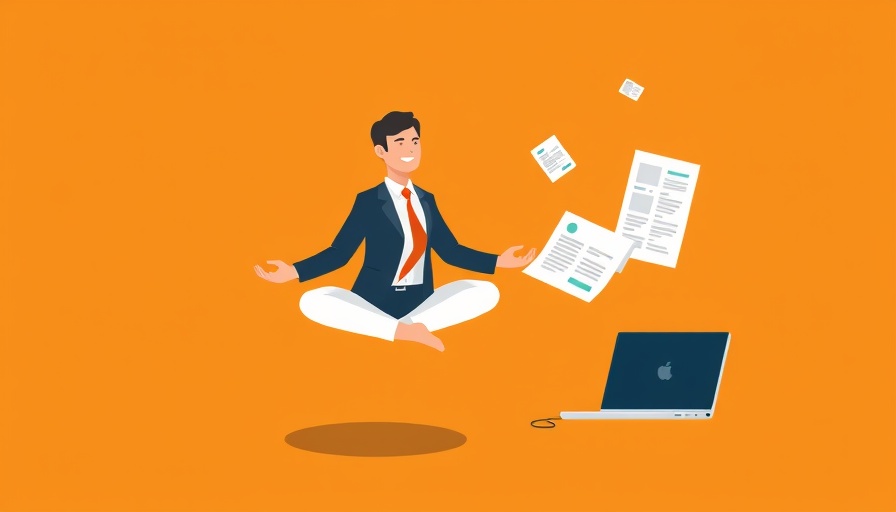
Understanding Burnout: The Hidden Crisis in Startups
In today’s fast-paced entrepreneurial environment, burnout stands out as both a cautionary tale and a silent epidemic. Research shows that nearly half of CEOs consider burnout the top challenge within their workforce. This alarming statistic underscores the urgent need for greater awareness surrounding mental health, especially among high-performance startups.
According to a study by Foundology, 93% of founders exhibit signs of mental strain, with a concerning 54% reporting burnout. The pressure to innovate and succeed can often overshadow personal well-being. This creates a vicious cycle where the very passion that fuels startups can become a source of exhaustion and anxiety.
The Need for Empathetic Leadership
Empathetic leadership is pivotal in promoting a healthy workplace culture, especially as employees face mounting stressors. Savvy startups and innovative venture capitalists are embedding mental health care into their operational practices. By recognizing that leadership requires more than just decision-making prowess, they are paving the way for cultures that prioritize well-being as part of their DNA.
As Harvard Business Review highlights, empathetic leaders nurture an environment where team members feel valued and understood. They openly discuss mental health issues rather than sweep them under the rug, thus fostering an atmosphere of trust and security. This fundamental shift can lead to higher morale, improved productivity, and lower turnover rates.
Five Empathetic Leadership Tips for Burnout Recovery
1. Build Rest and Reflection into Your Calendar
To combat the guilt often associated with taking breaks, it’s essential to integrate rest and reflection into your company’s schedule. Consider blocking off specific days in your quarterly roadmap for these activities. This practice allows everyone to step back, evaluate their performance, and share their experiences openly. Simple changes, such as implementing a “no-email” hour or swapping a seated meeting for a walk-and-talk, can make a significant impact.
2. Shift Focus from Progress Deficiencies to Achievements
For many founders, there is a pervasive fear of failure that petrifies decision-making. Instead, cultivating a mindset that recognizes progress over perfection can empower teams to embrace failure as a stepping stone towards innovation. This not only alleviates the pressure but also fosters a supportive environment where learning is prioritized over blame.
3. Encourage Conversations About Mental Health
Make discussions around mental health an integral part of your workplace culture. Regular check-ins about stress levels and overall well-being can help normalize these conversations, ensuring that no employee feels isolated in their struggles. This can involve assigning a member of the team as a 'wellness champion' to facilitate these discussions and encourage proactive steps towards mental health.
4. Promote a Healthy Work-Life Balance
Encouraging employees to prioritize their mental health can result in a well-balanced workforce that is genuinely motivated. By offering flexible work arrangements, promoting adequate vacation time, and reducing after-hours communication, you can nurture a more sustainable work-life balance that benefits everyone.
5. Lead by Example
As a leader, demonstrating vulnerability and acknowledging your stress or burnout can resonate deeply within your team. When team members witness their leaders prioritizing their well-being, they are more likely to feel empowered to do the same. Sharing your own coping mechanisms or self-care rituals can pave the way for a more open dialogue about wellness.
The Broader Implications for Workplace Wellness
Revolutionizing workplace culture through empathy reaps long-term rewards—not just for individual employees, but for the organization as a whole. Embracing mental well-being paves the way for innovation, sustainability, and resilience. According to research from Flourish Ventures, organizations that prioritize mental health see tangible benefits, such as increased creativity and connection among team members.
As we navigate a landscape defined by rapid change and uncertainty, it's vital for startups to adapt and prioritize well-being. Organizations that are laden with empathy-focused practices will not only retain top talent but will also cultivate a thriving culture that withstands the test of time.
Conclusion: Take Action for a Healthier Workplace
As the data indicates, the stakes are high when it comes to addressing burnout in the workplace. Startups and leaders must recognize the need for proactive change that prioritizes the mental health of their teams. These five empathetic leadership tips serve as a guide to initiating impactful policies that can transform burnout into resilience and innovation.
It's time to take action towards a more supportive work environment. Consider implementing these strategies to promote well-being within your organization. The healthier your workplace is, the more likely it is to thrive in challenging times.
 Add Row
Add Row  Add
Add 




Write A Comment